6 Research and knowledge
6.1 The value of Norwegian research in the Antarctic
Norway is one of the foremost polar research nations. For natural reasons, its activities are predominantly focused on the Arctic, but Norway also has a long history of research, expeditions, mapping and commercial activity in the Antarctic. This tradition in combination with our current logistical resources and scientific expertise provides an excellent springboard for Norwegian research in the Antarctic.
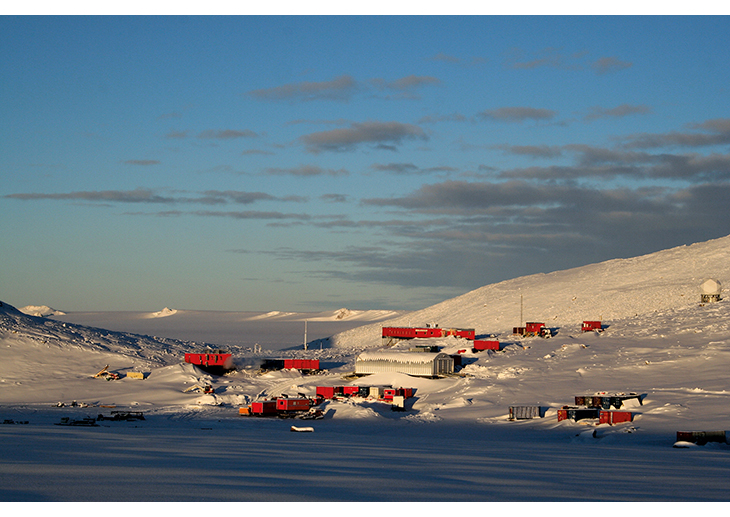
Figure 6.1 The evening sun at Troll, the Norwegian research station in Dronning Maud Land.
Photo: Stein Tronstad, Norwegian Polar Institute.
The fact that Norwegian polar research covers both the Arctic and the Antarctic is an advantage. Studies of the environment, ecosystems, ice, oceans and atmosphere in both polar areas are a basis for understanding global phenomena such as climate change and other large-scale phenomena, including the long-range transport of pollutants, ecosystem dynamics, atmospheric processes and ocean currents. What we have learned about the Arctic can be applied to our study of developments in the Antarctic. The Antarctic influences, and is itself influenced by, global climate change by way of changes in the floating ice shelves, in air and ocean circulation patterns and in the level of the sea. Norway has strong research communities in these fields that contribute to the growth of knowledge globally.
Quality is an overarching goal in all research and a prerequisite for achieving scientific influence and status. The relative incidence of citations is a criterion often used to measure quality. Norwegian polar research exceeds the global average in terms of the frequency of publication citations,1 but Norway still trails the leading nations. We have the potential to rank in the top 10 by building up expertise, recruiting competent researchers and participating extensively in international collaboration. Norwegian polar research will face a generational change in the coming years. It is crucial that new scientists be given the opportunity to develop and apply their expertise in the Antarctic.
A sound knowledge base is essential for the Antarctic Treaty parties to manage the environment of the treaty area responsibly and effectively. Norway adds to this knowledge base through research. Research is also essential for meeting our obligations under the Environment Protocol and the CAMLR Convention. For example, knowledge of how different activities impact the environment is important for planning and carrying out activities in accordance with the Environment Protocol. In-depth knowledge of marine ecosystems is a prerequisite for ensuring the sustainable management and harvest of the resources in the waters around Antarctica. Research is also of decisive importance for exploiting new fields, such as marine bioprospecting; see chapter 8.9. The Antarctic also offers promising conditions for space research. Because interference from water vapour and radio frequency noise is minimal, the continent is a good site for astronomical and cosmological observation; see chapter 8.7
In addition to the obvious intrinsic value of sound science, research activities are of great value to Norwegian interests and Norwegian policy in the Antarctic, and they underpin Norway’s role as a responsible, science-based polar nation.
The Government will:
Promote the development of knowledge in and of the Antarctic.
Facilitate the recruitment, within current budgetary limits, of new and established scientists to conduct research in the Antarctic.
6.2 Status of Norwegian research in the Antarctic
Norwegian researchers in the Antarctic contribute information for management purposes and for the development of basic science; they do so both independently and in participation with international research efforts. In 2010, Norwegian polar research was ranked No. 3 for the Arctic and No. 21 for the Antarctic (measured by the number of publications). The largest research nations in the Antarctic are the United States, the United Kingdom, Australia and Germany. Although the Arctic is the primary focus of Norwegian polar research, Norwegian research in the Antarctic is attracting growing attention and interest.
The basic factors underpinning Norway’s effort are infrastructure, expertise and international collaboration.
6.3 Infrastructure
Given the geographical and climatic conditions in the Antarctic, good infrastructure is a prerequisite for all research, monitoring and mapping. The Norwegian infrastructure has been developed to support research and monitoring activities.
The Troll research station in Dronning Maud Land was upgraded to a year-round facility in 2005 and today makes it possible to carry out research and monitoring activities all year long. The station has instruments to measure meteorological data and UV light, and is a field station for glaciological, biological and geophysical field programmes. The TrollSat satellite station downlinks satellite data on weather and climate, space weather, ice conditions and the environment. The number of continuous and automated measurement series at Troll can be increased, maximising the benefits of a year-round station. Optimising the use of research infrastructure is an important goal. Given resource considerations and the unique opportunities that Troll represents for research and monitoring, an increase in year-round research and monitoring activities is advisable. Norwegian scientists also require access to the research infrastructure of other countries in the Antarctic. As a result of the rise in international interest in Antarctic research, a growing number of countries are establishing new summer and year-round research and monitoring stations, making it easier to cooperate, coordinate and share equipment and data despite nationality. The Troll research station and associated logistical services allow Norway to spearhead efforts to increase research coordination and promote cooperation between the various research stations in Dronning Maud Land.
In a report on Norwegian research activities in the Antarctic in the 2013–2022 period (Norsk forskingsinnsats i Antarktis 2013–2022), the former National Committee for Polar Research at the Research Council of Norway pointed out that while land-based research infrastructure can be used more effectively, marine researchers require better access to infrastructure. A new national, ice-class research vessel, Kronprins Haakon, is currently under construction and due to be operational in 2018. This vessel will give Norwegian scientists a unique platform for conducting marine research, climate research and other polar research in both the Antarctic and the Arctic.
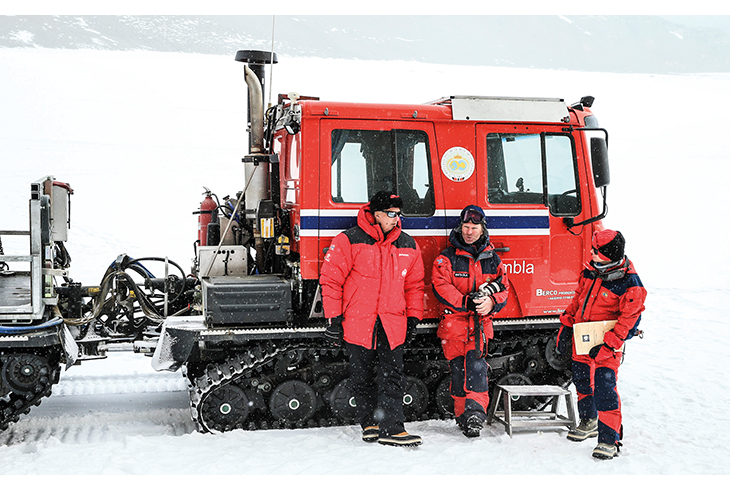
Figure 6.2 HM King Harald visits Troll in February 2015. This was the first time a reigning monarch visited the Antarctic continent.
Photo: Stein J. Bjørge, Aftenposten.
The Government will:
Help to ensure that available infrastructure capacity is exploited by setting priorities and expanding capacity.
Help to ensure that steps are taken, within established frameworks, to meet the requests of foreign institutions wishing to establish a presence at the Troll research station.
Facilitate optimal utilisation of the new research vessel Kronprins Haakon for purposes such as international research cooperation on marine ecosystems and stocks.
6.4 Expertise
The largest Norwegian research institution in the Antarctic is the Norwegian Polar Institute. The institute plays a key role in topographical and geological mapping, environmental monitoring and management-oriented research, and serves as an expert strategic advisor to the authorities on polar issues. In the Antarctic, the Norwegian Polar Institute engages in both marine and terrestrial research of relevance to the current management regimes in the area, including CCAMLR. The Institute also contributes to international climate research, particularly on ice, oceans and ecosystems. Through the Norwegian Antarctic Research Expeditions (NARE) funding scheme, the Norwegian Polar Institute facilitates state-financed Antarctic research. The Norwegian Polar Institute is also responsible for logistics and operations in Dronning Maud Land, as well as for station operations and land-use planning at Troll. The Institute of Marine Research plays a central role in Norwegian marine polar research, mapping and advisory services. The institute’s activities in the Antarctic revolve primarily around CCAMLR and the management of marine living resources, with particular focus on resources that can be exploited commercially. Monitoring krill stocks is a vital activity, entailing the collection of data from commercial vessels and dedicated expeditions. Both the Institute of Marine Research and the Norwegian Polar Institute participate in efforts to provide a scientific basis for fisheries regulation and for discussing the issue of marine protected areas in the Antarctic.
Several Norwegian universities and research institutes also play a role in international efforts to increase scientific knowledge of the Antarctic. Some of their research relates to systems inside the Antarctic geographical area while other studies take advantage of the region’s unique conditions to address more general objectives, like contributing to knowledge of the climate and the atmosphere.
Research is also crucial to Norwegian commercial activities in the Antarctic, especially research aimed at enhancing marine expertise. The Norwegian state provides substantial funding for research in the Antarctic. The majority (around 70 per cent) of Norwegian polar research in the Antarctic is financed by appropriations from the central government budget to the Norwegian Polar Institute, the Institute of Marine Research and other research institutes, and around 14 per cent is funded through the Research Council of Norway’s research programme. The private sector also contributes to both the planning and funding of research in the Antarctic. In 2010, business and industry financed some 3 per cent of Antarctic research.
Complex sets of issues related to management, climate and the environment in the Antarctic make an interdisciplinary approach necessary. Polar issues can also be examined fruitfully from a social science and humanities perspective.
The Government will:
Promote the development and application of technology for automatic measurement and remote measurement (such as by satellite, aircraft, drone and unmanned vessel).
Facilitate the increased use of fishing vessels for research purposes.
6.5 International cooperation
Extensive international research cooperation is currently being carried out in the Antarctic, both through the established organisations and on a project basis. The Scientific Committee on Antarctic Research (SCAR) and CCAMLR’s Scientific Committee provide the framework for international collaboration on research and monitoring in the Antarctic. SCAR is a committee of the International Council for Science (ICSU), which is charged with initiating, promoting and coordinating scientific research in the Antarctic.
In 2010, 43 per cent of publications on Norwegian research in the Antarctic were based on international cooperation. While this represents a large share, it is slightly below the average for Norwegian research in general (56 per cent in 2013). To achieve the goal of higher quality and optimal utilisation of research infrastructure, Norwegian research in the Antarctic should to an even greater extent be oriented towards international cooperation and publication in prestigious international scientific journals. The growing international research activity in the Antarctic is a basis for new global, interdisciplinary cooperation and improved reciprocal access to infrastructure and research data. Through the EU research programme Horizon 2020, moreover, it will be possible to increase EU-funded Antarctic research, which currently is relatively modest.
Research in the Antarctic is highly resource-intensive and requires comprehensive interdisciplinary expertise and collaboration on infrastructure and research data. Through international research cooperation, we can gain knowledge that would otherwise lie beyond the reach of a single country.
The Government will:
Ensure that Norway plays a central role in international efforts to establish multilateral cooperation on infrastructure and data sharing in the Antarctic.
Encourage Norwegian Antarctic scientists to participate more actively in SCAR working groups and publish more often in international scientific journals.
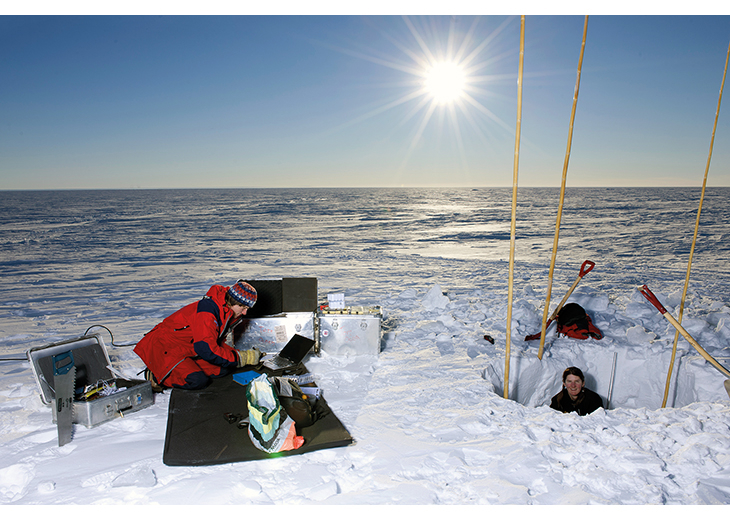
Figure 6.3 Measuring ice mass movement on the Fimbul Ice Shelf.
Photo: Norwegian Polar Institute.
6.6 Goals for Norwegian research in the Antarctic
The Government has set the following primary goals for Norwegian research in the Antarctic:
Utilise Norwegian research and Norway’s advantages in the Antarctic to strengthen Norway’s position as a polar research nation.
Support and set conditions for Norwegian management and activity in the Antarctic.
Help acquire broad-based insight into global climate and environmental changes, in part by exploiting the synergies between polar research in the south and in the north.
Acquire research-based knowledge that allows Norway to strengthen and fulfil its obligations as a treaty party in an optimal manner.
Norway’s general research policy was defined in Meld. St. 18 (2012–2013) Long-term perspectives – knowledge provides opportunity. This white paper underscores the importance of enhancing the quality of Norwegian research. Steps must be taken to promote bolder, more innovative research, a stronger focus on internationalisation and greater interaction in both the development and use of knowledge. International statistics have documented the need for higher quality and greater internationalisation in parts of Norwegian polar research.
The long-term plan for research presented by the Government in the autumn of 2014 provides an important basis for determining priorities in upcoming years2. The plan sets three main objectives: enhancing competitiveness and innovation capacity, addressing major social challenges and developing research communities of outstanding quality. Six thematic priorities are highlighted in the plan, including prime topics for Antarctic research such as the seas and oceans, climate, the environment and an innovative private sector.
The Research Council of Norway has drawn up two plan documents that recommend strengthening research activities in the Antarctic: Norges forskninginnsats i Antarktis 2013–2022, a report from the Norwegian Polar Committee on Norwegian research activities in the Antarctic(Research Council of Norway, 2012; see information in chapter 6.3), and Norsk polarforskning, a document on Research Council of Norway’s polar research policy 2014–2023 (Research Council of Norway, 2013). The documents are based on the broad participation of research communities and provide a solid foundation for defining priorities in future activities under the auspices of the Research Council of Norway.
At the same time, given Norway’s position and interests in the Antarctic, research must also take account of other important considerations and demands. In addition to developing new insight and knowledge, research must aim to underpin Norway’s position, policy, management and commercial activities in the area. It must also be carried out in accordance with the environmental requirements established for the area.
The Government will:
Motivate research institutions to collaborate more closely with business and industry and the public sector on training polar researchers.
Motivate business and industry to invest more extensively in understanding the Antarctic and participating in international polar research cooperation.
Textbox 6.1 Earth system science
Earth system science (ESS) covers the study of individual processes and interaction at all levels between the biosphere, geosphere, atmosphere, cryosphere and hydrosphere, and is based on data from all five spheres. Human beings (the anthroposphere) also affect processes within and between these spheres, and are themselves affected by the same processes. There are several reasons why the polar regions are of particular interest in an ESS context:
The ecological systems there are often simpler.
Both natural variations and the effects of human activity can be greater in polar regions than elsewhere.
Several of the driving forces for and effects of dominant global processes are to be found in polar regions (thermohaline circulation, ice cover).
Certain processes of global significance are found in the polar regions (the Aurora Borealis or Northern Lights, the Aurora Australis or Southern Lights, and other plasma phenomena).
6.7 The need for knowledge in connection with climate change
Together with the Arctic, the Antarctic plays a key role in the global climate system. The inland ice sheets in Greenland and Antarctica account for around 99 per cent of the total volume of freshwater ice in the world. The ice in West Antarctica alone contains enough water to raise the sea level by several metres. Accelerated melting of the Antarctic and Greenland ice caps would be irreversible, with dramatic, long-term global effects.
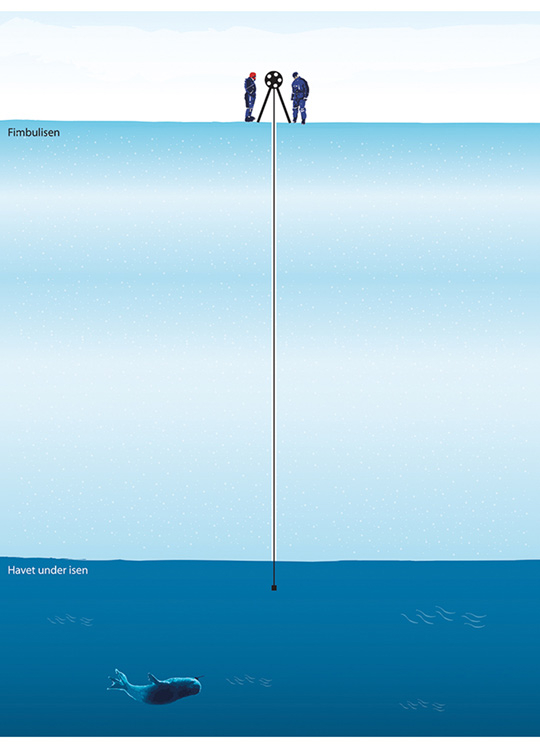
Figure 6.4 Ice core drilling in the Fimbul Ice Shelf.
Illustration: Eirik Berger, Norwegian Polar Institute.
The temperature has risen most steeply in the western and northern parts of the Antarctic Peninsula, increasing by 0.53° C per decade between 1951 and 2006. The temperature increase observed is caused by warm air conveyed to the peninsula by strong westerly winds. The warming in West Antarctica is attributable to the higher surface temperature of the waters in the tropical Pacific Ocean. It is unclear how much of the Antarctic warming is due to human impact, and how much can be explained by natural variation.
In the Antarctic, satellite data show that the average extent of sea ice has increased slightly in the area as a whole, but that there are large regional differences. Whether this increase is an indication of a lasting change is uncertain, because the ice extent varies considerably from year to year around Antarctica. Based on the knowledge available, it is reasonable to expect that the Antarctic sea ice will gradually decline in area and thickness.
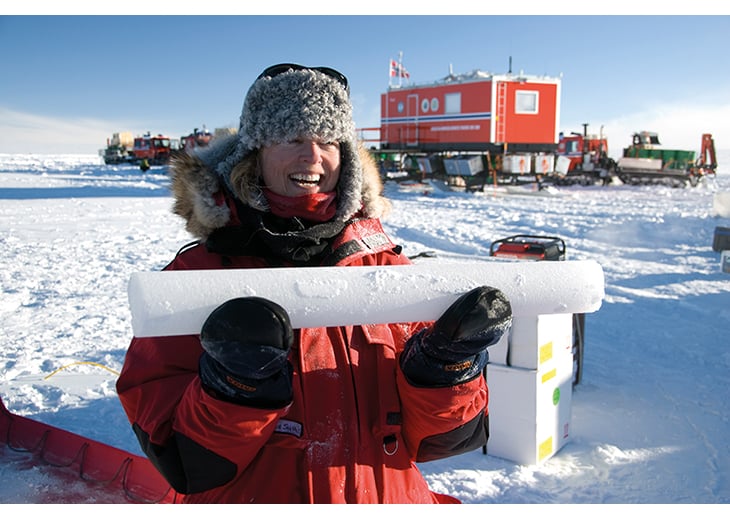
Figure 6.5 The first ice core to be extracted from the ice.
Photo: Jan-Gunnar Winther, Norwegian Polar Institute.
The Antarctic ice masses flow towards the coast from the inland ice in the high-elevation interior. When the ice reaches the sea, it floats outwards and forms a rim of floating ice, called the ice shelf. Warmer ocean water that penetrates beneath the ice shelf can cause it to melt and break up. This process is largely limited to the Antarctic Peninsula and the area around the Amundsen Sea in West Antarctica. The Intergovernmental Panel on Climate Change has concluded that the loss of ice along the coast of Antarctica (due to calving and melting) is greater than the expansion of inland ice caused by heavier precipitation. Models show that Antarctica will continue contributing to a sea level rise.
Current studies of potential climate changes in the Antarctic are based on circulation models that view atmosphere, ice and oceans comprehensively. Despite the uncertainty of the model results, researchers agree that temperatures over the Antarctic could rise several degrees in this century if greenhouse gas emissions to the atmosphere continue to increase at the present rate. It is expected that the surface temperature in the Antarctic in the year 2100 will remain well below the freezing point over most of the continent, and that the temperature rise will not contribute to melting of the Antarctic ice sheet.
Nonetheless, lack of knowledge is a fundamental obstacle to achieving a full understanding of climate change in the Antarctic and the significance of the Antarctic for global climate change. Research in the Antarctic in general and climate research in particular is extremely resource-intensive and requires a wide range of interdisciplinary expertise. Through international research cooperation, we can acquire knowledge of climate change that it would not otherwise be possible for a single nation to achieve on its own.
The Government will:
Facilitate increased research cooperation with other countries with focus on the role the Antarctic plays in the global climate system, and on how changes in ice masses will affect the sea level.
Textbox 6.2 The ICE Ice Rises climate project
ICE Ice Rises is a climate project aimed at studying the ice rises on the ice shelves along the coast of Dronning Maud Land. An ice rise is compressed ice that has been lifted up in areas where the ice shelves run aground on the seabed. These groundings have an effect on the ice shelves, in part by braking their movements out at sea. The project’s goal is to learn whether these ice rises affect the speed at which the ice moves towards the sea – and if so, how – as well as whether they have any bearing on the melting of the ice and the level of the sea. The objective is thus to improve our understanding how the ice moves in the complex system of glaciers, ice rises and ice shelves. The results of this research will be used in ice models.
The fieldwork associated with this project was conducted over the course of three Antarctic summers, from 2011 to 2014. The ICE Ice Rises project was led by the Norwegian Polar Institute through the Centre for Ice, Climate and Ecosystems (ICE), a national competence centre for ice and climate research in the polar regions.
6.8 Topographical and geological mapping
Most of Antarctica is covered by ice, but where mountains breach the ice there are bare rocky areas free of vegetation. This gives geologists an opportunity to study how the rocks were formed and which geological processes must have taken place in the Earth’s crust. In the past few years, scientists have also begun to use geophysical methods to obtain information on the bedrock beneath the ice. Antarctica is a continent of great geological diversity. There are fossiliferous sedimentary rocks, lava and deep magmatic rocks and a wide range of metamorphic rocks as well as active volcanoes and glacial deposits.
The distinctive jagged mountain peaks that are so characteristic of the landscape in central parts of Dronning Maud Land are a result of Antarctica’s geological development over millions of years.
The Norwegian Polar Institute has national responsibility for the topographical and geological mapping of Dronning Maud Land. This has resulted in a series of natural environment maps with a scale of 1:100 000 and detailed maps of the area around the Troll research station. These maps also provide geomorphological, glaciological and biological information.
The first geological mapping of Dronning Maud Land was carried out during the Maudheim expedition (the Norwegian-British-Swedish Antarctic Expedition) of 1949–52. Over the past 30 years, a number of expeditions involving geological surveys have been conducted. Nonetheless, Norway’s geological mapping activities in Antarctica have been rather minimal. This is primarily due to the substantial resources required as a consequence of costly and challenging logistics and mobility difficulties. Current knowledge of the geology of Dronning Maud Land is therefore limited, and more expertise and capacity are needed.
The Government will:
Secure monitoring and mapping activities in the Norwegian Antarctic dependencies.
Seek to ensure that sufficient mapping and monitoring are carried out to safeguard Norwegian interests and fulfil Norway’s international obligations.
Textbox 6.3 Geological maps
The bedrock in Dronning Maud Land has been investigated and mapped by geologists from several countries, including South Africa, Japan, India, Germany, Russia and Norway. In addition to bedrock maps published by the Norwegian Polar Institute, geological maps have also been produced by the National Institute of Polar Research (NIPR) in Japan, the Federal Institute for Geosciences and Natural Resources (BGR) in Germany and the National Centre for Antarctic & Ocean Research (NCAOR) in India/the Geological Survey of India. Some map data have also been published in doctoral theses and scientific publications. The existing maps have different scales, and the standards and norms for classification of the rock units also differ. At present, there are no uniform map series, scales or norms for bedrock classification, and there is no overall geological map of Dronning Maud Land.
The Norwegian Polar Institute has therefore initiated a four-year project (2014–2017) to develop a standardised, general geological map of the bedrock in Dronning Maud Land. The project is funded by the Norwegian Ministry of Foreign Affairs. The goal of the project is to transfer and compile older and more recent maps into a uniform digital geological GIS database. The original versions of existing maps are to be digitised, and the new map will be compiled to the scale of 1:250 000. A new uniform international coding standard will be used for the general map. The GIS database will be administered, maintained and updated by the Norwegian Polar Institute. Target groups will include the scientists working in Dronning Maud Land, other research and education institutions, Norway’s public administration and interested members of the public searching for information on geological conditions in the Antarctic.